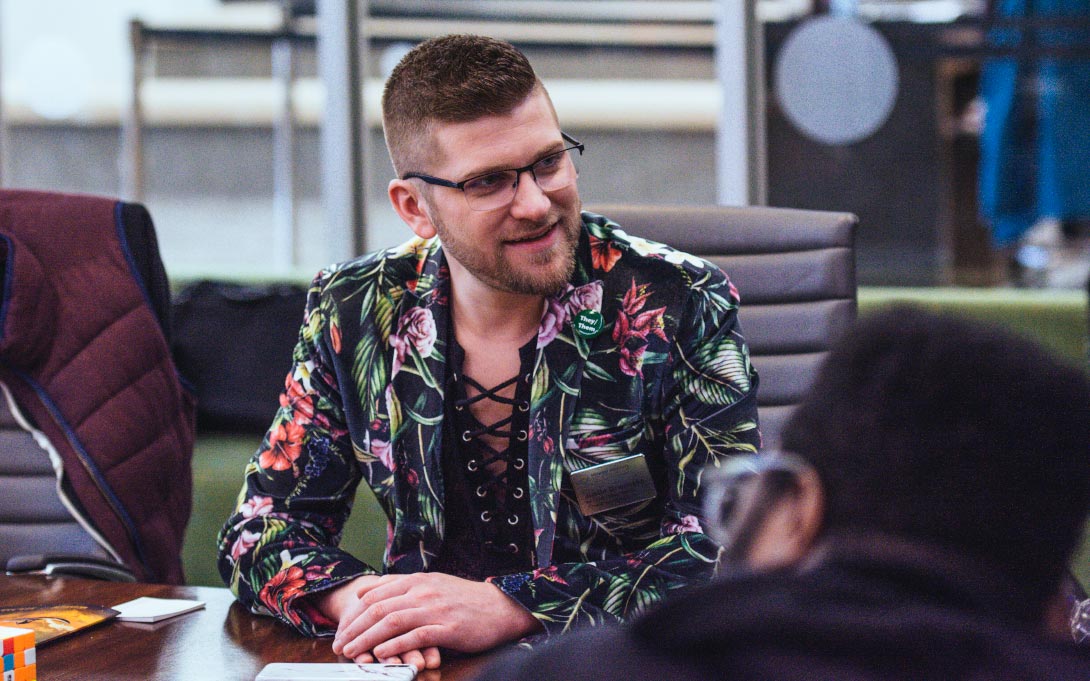A Transgender Day of Visibility guest post
By Justin Drwencke | @jdrwe

Earlier this month, I saw Love, Simon and I wept. I cried tears of sadness then tears of joy. I couldn’t help but see parts of my coming out journey replayed in Simon’s. That is, the coming out journey I had 12 years ago when I came out as a gay man.
It was easy to pick gay as a label for myself. There were possibility models for living as a gay man. I remember watching episodes of Will and Grace when nobody else was home and lusting after Adam Lambert competing on American Idol. And now, the next generation of gay youth have Love, Simon as a possibility model.
But for me, identifying as a gay man for the last 12 years felt like a forced fit. I didn’t feel quite right but I didn’t have the words to describe what I felt. I assumed everyone felt this uncomfortable, I assumed there were no other options. So I put up barriers, thinking that I needed to simply make the best of it—“don’t let anyone see your discomfort,” I thought.
When I got to college, being gay was relatively easy. I was fortunate to attend a university with a wealth of resources and several student organizations to choose from. In my second year, I attended the 19th MBLGTACC and after a 50-minute bus ride to Ann Arbor, Michigan, I encountered a world of queerness that I could have never imagined. But, my barrier was up and it was strong. I dismissed any possibility that I could be anything other than a cis, gay man.
I pressed forward with this obstinance for seven more years, but slowly, the wall I built came down. I sought out queer spaces and as I did, I observed ethereal non-binary folx subvert cisheteropatriarchy. Slowly, I began to unpack my own understandings of masculinity and gender. Now, I am in the process of coming out as genderqueer.
As I reflect on my coming out experiences, I question what my experiences may have been if there were visible non-binary possibility models earlier in my life. I’m excited about Love, Simon. I’m going to watch it again and I acknowledge the film’s importance. Increased gay and lesbian representation in TV and film is critical, but where are the non-binary possibility models?
Would increased non-binary visibility have made it easier for me to understand my gender identity earlier? Perhaps. It’s also possible that increased visibility would make coming out an easier process. Jeffrey Marsh, author of How To Be You, recently tweeted:
It’s weird that non-binary folks need to be so dang ARTICULATE just to exist
to come out, we need to understand and explain gender theory
we almost never get to say “uhhhhh I don’t know” [shrug emoji] about our identity because that would be dangerous [yellow heart emoji]
A few weeks ago, I came out as genderqueer to a potential romantic partner. Our conversation quickly turned into an exhausting “Gender Theory 101” lesson that derailed my interest in a romantic relationship. What would this interaction have looked like if there was more non-binary visibility. What if I wasn’t the first person he encountered who identified as genderqueer?
I’m still in the process of coming out. I’ve been selective about who I tell and when. There is fear in coming out but I’m working through it. In a recent story for InStyle promoting her book The Opposite of Hate, Sally Kohn wrote: “Affirmatively and actively connecting with others and experiencing our common humanity creates opportunities for that bigger love, expansive and expanding humanity-wide love, that emphasizes our connections and safeguards against hate.” I am hopeful by demanding to be seen as genderqueer and connecting with others, I can make a difference. I can be a possibility model for the next generation.
Justin Drwencke is the executive director of the Midwest Institute for Sexuality and Gender Diversity.